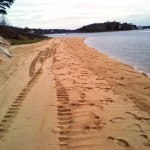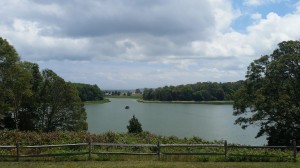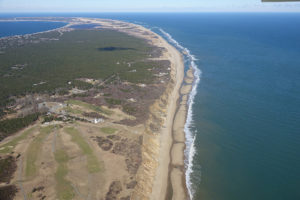EAST FALMOUTH – The Seacoast Shores board of directors held another meeting this past Saturday to try to answer residents’ concerns about the organization’s finances.
It was the third meeting in the past week in order to meet the demand for information from residents. Meetings the week before were so full that dozens of people could not fit in the room to hear the presentation.
Seacoast Shores is a densely populated neighborhood in East Falmouth with 900 homes. Of those homes, 300 of them are members of the association.
“We need more of the residents to become association members and help us repair and maintain the rights of way and the beach. There is no way now or in the near future we can increase the dues on the association members. The few will not continue to pay for the many,” Richard Sette, president of the board of the Seacoast Shores Association said.
Seacoast Shores, Sette said, is a beautiful peninsula with deep water access on both sides, close to Washburn Island and Waquoit Bay and with easy access to Vineyard Sound.
Sette said he moved to Seacoast Shores in 1979 and over the years, the population of the peninsula has changed. Twenty years ago, 80 percent of the homes were rentals, but, he said, that is no longer the case.
Back then, the finances worked, Sette said. Homeowners could get a low cost mortgage and buy a second home and rent it at a profit.
Now with both parents working, 80 percent don’t rent that houses but instead use them for weekends and vacations. “It’s really changed the peninsula. It’s more stable. The crime rate has gone down. It’s just a better place. We’ve seen major improvements,” he said.
The association built a new clubhouse about seven years ago. The cost of that project is a bone of contention among some residents.
Of the 300 association members, 205 are “investment” members and about 145 are clubhouse members, Sette said.
To be an investment member initally cost $5,400, which could be spread out over 10 years. It was later increased to $6,000, also spread out over 10 years, or $600 a year.
“That’s a very affordable plan,” Sette said.
Investment members can join the clubhouse for another $900 a year plus an upfront food minimum that members get back when they use the dining amenity, he said.
The association is estimating they need 100 new members a year at $300 per year for the next three years to pay for the needed improvements, Sette said.
Board members say they need more money through association dues to maintain the neighborhood’s rights of way to the waterfront.
Sette said it will cost $90,000 for rights of way repairs and beach nourishment and that cost can be spread over three years.
The problem, Sette said, stems from the fact that when the Seacoast Shores development was first built on the peninsula, the developer did not fine-tune the covenants for property owners.
“A lot of people have rights to use the beaches and the rights of way, but nobody is required to pay for them, so they’ve been in disrepair for a long time,” he said.
He said that the association just re-nourished the association’s beach for $22,000.
Through a survey about the association beach and from complaints from abutters, Sette said, “We found out people using the beach number one don’t even live on Seacoast Shores and we have a lot of non-association members using the beach. Basically it’s the few paying for the many and we can’t solve the problems using that approach.”
Sette said the association has been doing a very thorough review and investigation of its rights of way. The association owns 21 of the rights of way on the peninsula, he said.
“They are not in good shape,” Sette said. He said that for 60 years, since the development was constructed, people have been leaving dinghies, kayaks and canoes on the eel grass, which has done damage to the ecosystem.
Killing the grass that holds the marsh together contributes to erosion, he said.
The association is working with the Falmouth Conservation Commission on a plan for the rights of way, Sette said. Among the highlights of that plan, he said, are that kayak racks be installed on the rights of way back from the coastal zone and off the marsh grass, where members who pay their association dues can keep their kayaks.
The association is also planning to work with the town on drainage in front of right of ways. Some rights of way have suffered from erosion forces from estuaries and some suffering because street drainage into the rights of way.
Sette said the association plans on recruiting more homeowners in the neighborhood to become members which will help with financing the rights of way repairs. If anyone cannot handle the cost of joining because of a hardship, Sette said the association will handle that confidentially as they have done in the past.
He said the association will not raise membership dues for homeowners but will instead encourage more residents to become association members.
He said he is optimistic going forward. “Seacoast Shores is a great community. Sure, there are some disagreements going on now. But we’re going to talk it out. We’re going to see what the members want. We’re going to see what the residents want. And we’re going to work with them to solve the problem,” he said.

























